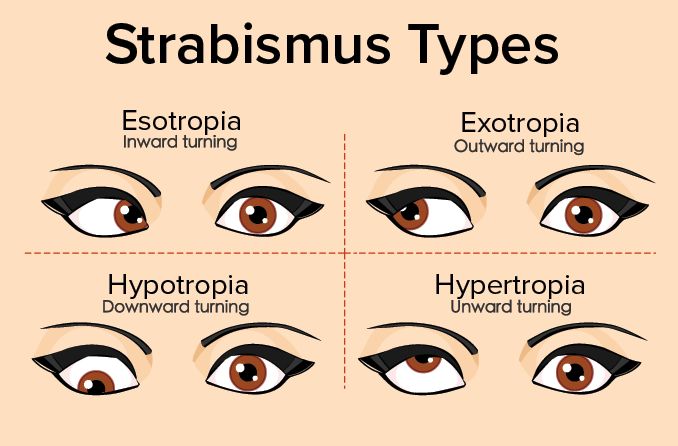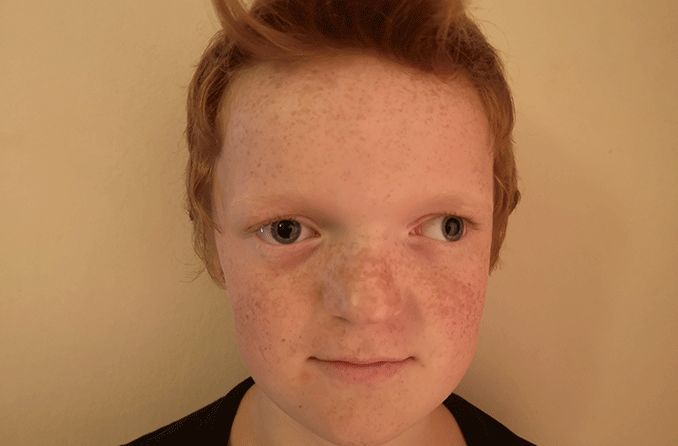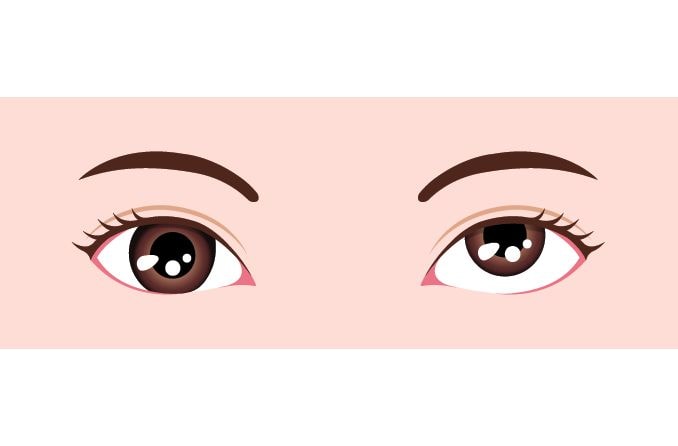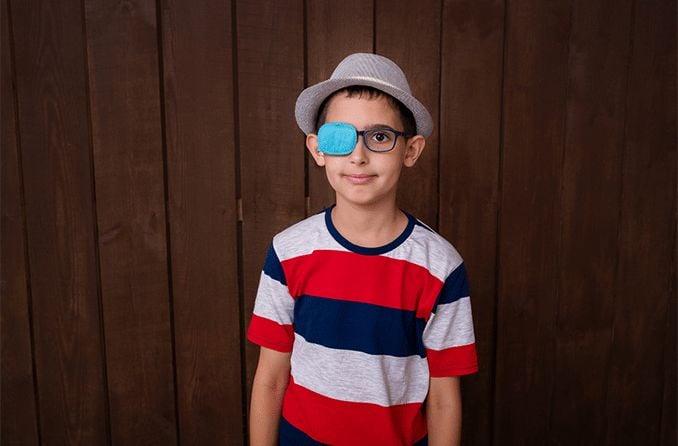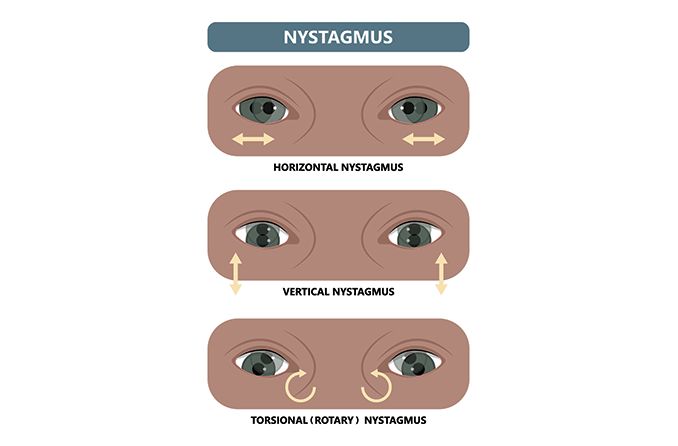Causes of convergence insufficiency
The cause of convergence insufficiency is not fully understood. It’s suspected that the problem stems from a miscommunication during the brain’s request for near-vision adjustments in the eye. It’s also possible that genetics are partially responsible as the condition tends to run in families.
In some instances, preexisting conditions that affect the brain can lead to CI. Some of these conditions include:
Concussion.
Traumatic brain injury.
Alzheimer’s disease.
SEE RELATED: Lazy eye (amblyopia)
Convergence insufficiency symptoms
Symptoms of convergence insufficiency vary among those affected. In fact, it’s even possible for someone with CI to experience no symptoms at all.
However, those who do have signs and symptoms of CI will experience them only when using near vision. Common symptoms include:
Diplopia (double vision).
Headaches.
Dizziness.
Difficulty concentrating on near tasks, including reading — which may cause children to avoid reading or completing school work.
Eye strain characterized by sore, tired, irritated eyes.
Squinting, rubbing or closing one eye when focusing up close.
Diagnosing convergence insufficiency
Convergence insufficiency often goes undiagnosed. Children with the condition may have no other vision problems, which makes it easy for them to pass a vision screening at school.
In order to properly diagnose convergence insufficiency, a comprehensive eye exam is required. During the comprehensive eye exam, an eye doctor may ask questions regarding symptoms associated with convergence insufficiency.
It’s important to tell your eye doctor about any abnormalities you notice in your vision, regardless of how insignificant you may think they are. Mentioning headaches or eye strain when focusing close up can bring your eye doctor’s attention to a problem they may not have otherwise suspected.
To diagnose convergence insufficiency, an eye doctor will measure:
Near point of convergence – How close an object can get to the face while the eyes maintain convergence (working together). Once an eye begins to drift, the nearing object stops and its distance from the face is measured. People with CI will usually have a measurement of more than 6 centimeters.
Exodeviation – How prone the eyes are to wandering outward. Those with CI will have greater exodeviation when viewing close-up objects versus distant ones.
Positive fusional vergence – How well the brain communicates convergence to the eyes — the core issue in CI. A doctor will have the patient read letters through various prism lenses, each gradually increasing in intensity, and make note of when the patient starts having double vision.
Accommodation – How well the eyes are able to change focus from far to near.
SEE RELATED: Are learning-related vision issues holding your child back?
Convergence insufficiency treatment
People who do not have any symptoms of convergence insufficiency may not require any treatment. For those who do, vision therapy for convergence insufficiency had proven to be an effective form of treatment for many.
Vision therapy consists of performing several convergence insufficiency exercises that increase the eyes’ ability to work together. These can be performed in a vision therapy office or in the comfort of your own home, though children and young adults typically respond better to in-office treatment.
Common exercises to help combat convergence insufficiency include:
Pencil pushups – Consists of holding a pencil at arms length, where the CI patient can focus on it as a single image. The patient will slowly bring the pencil closer to their face until they start seeing double. This exercise should be done for approximately 15 minutes per day, five days a week to reduce near point convergence.
Prism glasses – Used as a means to correct double vision rather than treat convergence insufficiency. Prism glasses bend light in a way that eliminates double vision in those who wear them, creating the appearance of a single image. Effectiveness may vary.
Computer vision therapy – Accomplished using a special computer software that can be downloaded to provide eye-focusing exercises at home. Results can be printed or shared with your eye doctor to track progress.
Surgery – Focuses on the eye muscles; these procedures have their own set of complications and risks. Though rare, surgery may be recommended if other treatments are unsuccessful.
Importance of routine eye exams
It’s a common misconception that vision screenings at school or the DMV can substitute for an eye exam. The truth is that a comprehensive eye exam performed by an optometrist or ophthalmologist can detect vision and eye conditions that a vision screening cannot.
So, while someone may pass a vision screening with flying colors, an eye exam may find a problem the screening did not detect.
Attending regular eye exams is the best way to manage any preexisting vision conditions and prevent new problems from developing.
SEE RELATED: Eye exams for children: Why they're important


